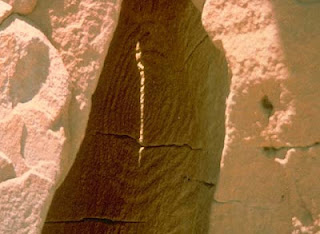 |
| 7 clan chiefs accompanied Sir Alexander Cumming to England in 1730 representing every region in which the Cherokee then lived |
So where did the
notion of “clans” come from? Here is an
interesting explanation from Deputy
Principal Chief Hastings Shade of the Cherokee Nation of Oklahoma:
“… there was of a
time when there were 14 Cherokee clans. Over the centuries, the Cherokee
combined clans and opened them to captives and non-Indians. The tribe settled
on the number seven to honor the seven directions: north, south, east, west,
up, down, and center. Before European
contact, the clan was the most important affiliation of Cherokees which gave
them their place in the tribe and in their world. Clan was passed from a
Cherokee mother to her children. In the matrilineal kinship system, a Cherokee
woman decided when and whom to marry. She could not marry a member of her
mother's clan, who were considered blood relations, no matter how distant.
After marriage, a man took his wife's clan.”
Some say that at
one time there were over 80 clans. Other
accounts hold that there were less. But,
most accounts admit that there were once more than seven clans and the
Chicamauga set up an extra bench at their dances to honor the missing clans
that they consolidate under the “Lost Bear” clan.
This account also
comes from the Chicamauga website:
“One of the clans
did not form into one of the tribes, but vanished completely. This was the
Ani-Tsaguhi (People who-disappeared), which many believe were some of our
people who went into the forest and willingly became bears in order to feed the
people during a time of famine.
"It is taught
among the Chickamauga that ALL Clans are part of the Bear Clan.
"Two other groups
of relatives, the Susquehanna and Tuscarora, joined the Iroquois. The Iroquois
moved north into the cold country and to the great lakes of the north.
The seven clans
that remained became known as Ugaya (Seven clan Society.)”
Each of the seven
remaining clans of the Cherokee has unique responsibilities in the tribe. The Anisahoni , or the Blue Clan or Blue
Holly Clan, represented the Sky. They taught the ways of the panther and wild
cats and were sometimes also called the Panther or Wild Cat Clan. Or, in some cases, the Panther, Wild Cat, and
Bear were thought of as subdivisions of the Anisahoni.
They taught the importance of the ability to balance
power, truth, intention, physical
strength, and grace in pursuit of the
seven levels of life achievement and fulfillment. Their color is blue, their wood is ash and
their flag is blue with white stars.
They were known
for a children’s medicine that they produced from a bluish colored plant called
the Blue Holly – hence the name. They
took care of medicinal gardens and specialized in children’s medicines.
According to
“cherokeeregistry.com”, these are notable Surnames: A: Ableman, Alberty B:
Baker, Ballard, Ballew, Bannon, Bear, Bearfield, Bearstriker, Beartracker, Bent
Leg, Berrymann, Big Fellow, Blood, Blue, Blue Horse, Boling, Bradberry, Brown
(Mary), Burns, Burns (Aky), Bushy, Buzzark C: Canaughkutt, Cane (Mary),
Casteel, Chembers, Chiltoskie, Cornseen, Cowin Crouch D: Daniels, Dardiene,
Dare, Deehee, Dog, Drowing Bear, Duck, Dull Knife F: Fawling (Nellie), Foreman
G: Gains, Gates, Geegah Nundah, Gilideehee, GoForth, GoodPasture, Gray Horse,
Green, Griss, Grundy H: Hair, Hamby, Hare (Jas), Heard, Highfield, Hobbs I:
Inlow K: Kenoteta, Kickupp, Kinder, Kitchen, Kofft L: Lame Arm, Lewis, Lock,
Long, Loudermilk, Lowery (Geo) M: Mackintyre, Mankiller of Settico, Marlin,
McCoy, McKenney, McKinnley, Miller N: Niven O: Oconastota, Ooloostah, Oolutsa
P: Peters, Pohatan Oolashela, Poor, Proper Q: Quatisis R: Rains, Raven
(Collanagh), Ray, Red Hand, Revels, Roap (Sallie), Rogers, Rose, Ross, Roy S:
Sagoni, Shallelock, Silver, Skallelock, Sriver-Walker (Elizabeth), Starr T:
Tacitie, Talontaskee (Jenny), Thunduski Guneega, Toon, Turner W: Wadichacha,
White Beaver Y: Yansa Gatoga, Yates, Young Z: Zillioñ, Zion







